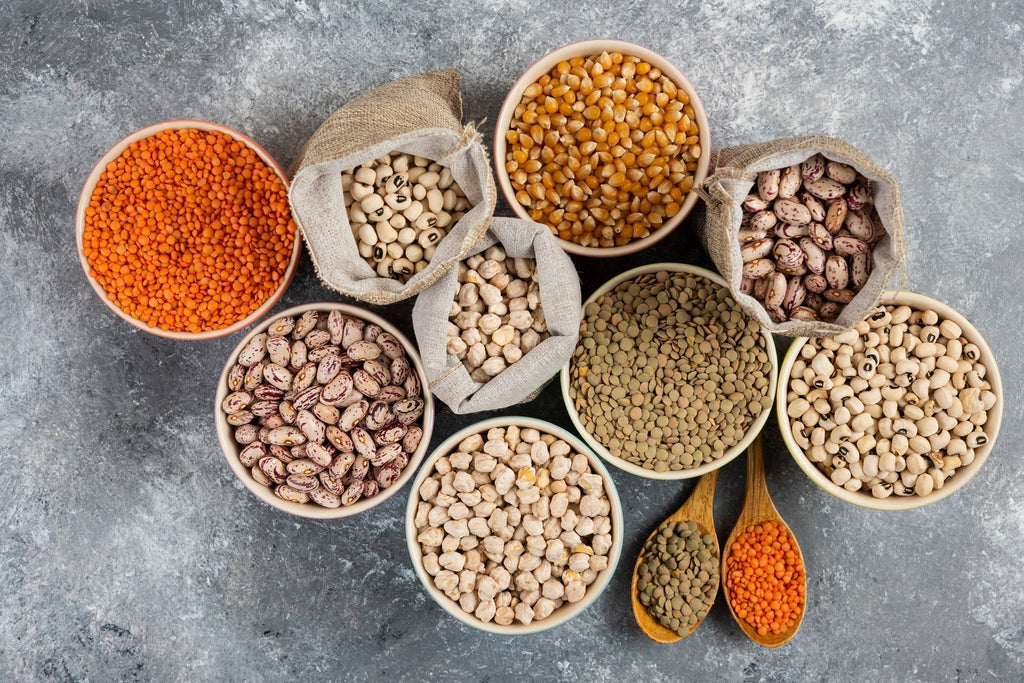Different cultures have different food dishes made up of different ingredients. However, grains are an essential ingredient that is common amongst every culture.
Grains are used all around the world, but each grain is different in terms of nutrition and taste. Incorpoarting different types of grains into your diet keeps mealtime fun and provides you with what you need to build a strong body.
So, making a variety of grains a part of your DIY long term food storage will be extremely beneficial.

Reasons Grains are Good for Storage
- Grains are highly nutritious. They have the required amount of carbohydrates and proteins along with major micronutrients. Consuming grains will provide you with these critical ingredients and help you stay healthy and strong.
- Most grains will stay edible long-term. If stored in an airtight container along with oxygen absorbers, most grains can be stored for more than 25 years. However, each grain has different fat content which might affect its overall shelf-life.
- Since grains are a part of several food dishes, it is easier to rotate them in your kitchen. You can introduce these grains to your family slowly over time to make them easier to consume during emergencies.
- Lastly, you can grind them into flour to add variety to your pantry. If you want to make your own DIY flour, you can buy an electric flour mill or hand mill to be used during emergencies.
Types of Grains Stored Long-Term: Uses and Shelf-Life
Wheat
- Uses: Wheat can be used in a multitude of dishes. Some of them include but are not limited to crackers, desserts, bread, breakfast cereals, muffins, pancakes, tortillas, used to make vegetarian meat/protein, and so much more.
- Shelf-Life: The shelf-life of unopened wheat is about 30 years. Once opened, it must be stored in airtight containers along with oxygen absorbers. Opened wheat has a shelf-life of 3 years.

Rolled Oats
- Uses: Make cookies, breakfast cereals, overnight oats, granola, meatloaves, casseroles, and more. Rolled oats are also a great replacement for wheat in baked items. This is especially important for those who want a gluten-free option.
- Shelf-Life: Similar to wheat, the shelf-life of unopened rolled oats is 30 years. Once opened, it will last for 1 year so be sure to use or store it quickly.
White Rice
- Uses: Cereal, rice pudding, side dishes, casseroles, and myriads of pilafs from around the world.
- Shelf-Life: When you buy white rice from the store, it is dehydrated and ready to be stored. Pack it in airtight containers such as Mylar bags with oxygen absorbers. The shelf-life of unopened white rice is 30 years. Even if you open it, white rice stores on the shelf for a pretty long time.
Corn or Cornmeal
- Uses: Hush puppies, cornbread, grits, muffins, johnnycake, mush, and used as breading for various fried items.
- Shelf-Life: Unopened cornmeal has a shelf-life of 5 years. Once opened, you need to use it within a year. To increase the shelf-life up to 30 years, try to store dehydrated whole corn. You can grind this whole corn to make cornmeal when you need it.
Pearled Barley
- Uses: Pearled Barley can be used similarly to white rice. You can use it in casseroles, side dishes, soups and stews as thickeners.
- Shelf-Life: Unopened pearled barley has a shelf-life of 10 years. However, if opened, the shelf-life is 18 months. It has a high-fat content and hence there is a high chance of going rancid, thus reducing shelf-life.

Brown Rice
- Uses: The uses of brown rice are similar to white rice. Brown rice can be used simultaneously with white rice to enhance the flavor and nutrient quantity of the dishes, too.
- Shelf-Life: When it comes to shelf-life, a lot of preppers disagree. Some say that the shelf-life of brown rice is 6 months, and some say more than a year. However, it all depends on how you store it. You should understand that brown rice has higher oil content and therefore has a high chance of going rancid more quickly than white rice. So, you need to be especially careful while storing brown rice and be sure to use it quickly.

Other Grains
Apart from these grains, there are several other grains that you might want to look into as you develop your long-term food storage plan. Some examples include, buckwheat, bulgur wheat, millet, Spelt, sorghum, wild rice, and so much more.
To store the above-mentioned grains or any other dehydrated food items, you should buy Mylar bags and oxygen absorbers. You can check out Wallaby Goods Mylar bags online. We offer Mylar bags in different sizes and bundles with oxygen absorbers.
Head to our website now to purchase our best selling Mylar bags before you stock up on any grains.
SHARE:





